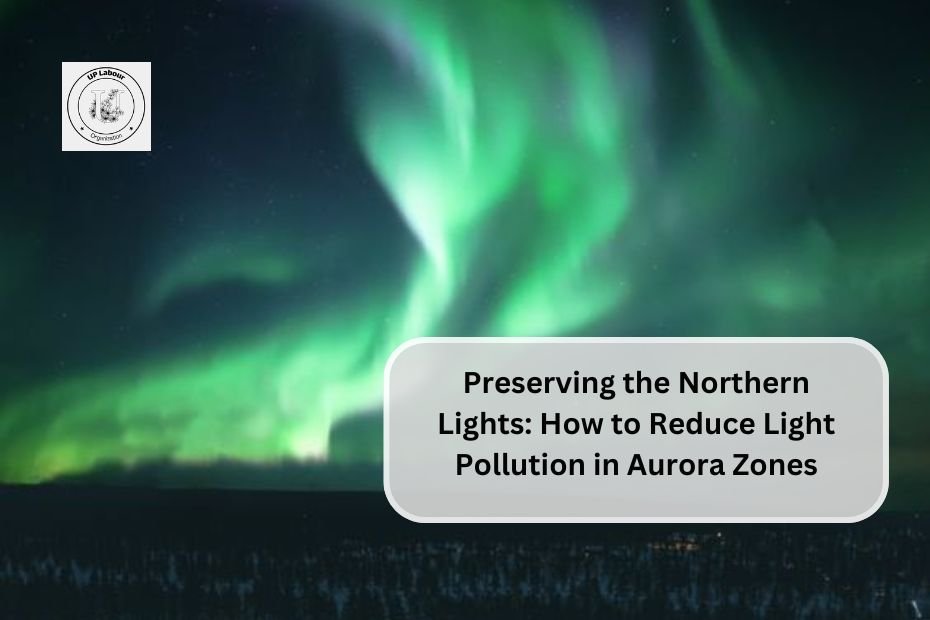Experiencing the Northern Lights, or aurora borealis, is a breathtaking event that many people dream of witnessing. However, light pollution poses a significant challenge to viewing these natural wonders, particularly in aurora zones. As urban areas expand and artificial lighting increases, preserving the beauty of the Northern Lights becomes increasingly important. Here’s how we can reduce light pollution in these regions to enhance our experience of this spectacular phenomenon.
Understanding Light Pollution
Light pollution refers to the excessive or misdirected artificial light produced by urban environments, which brightens the night sky and obscures celestial objects. It manifests in several forms:
- Skyglow: The brightening of the night sky over populated areas.
- Glare: Excessive brightness that causes visual discomfort.
- Light trespass: Unwanted or intrusive light spilling into areas where it is not needed.
These factors combine to create a night sky that can be significantly brighter than natural dark-sky locations, making it difficult to see the Northern Lights.
The Impact of Light Pollution on Northern Lights Viewing
- Reduced Visibility: The auroras rely on clear, dark skies for optimal visibility. In areas with high levels of light pollution, such as cities, the skyglow from artificial lights can drown out the faint glow of the Northern Lights. This diminishes their colors and movements, especially during weaker geomagnetic activity.
- Skyglow Interference: Skyglow caused by scattered artificial light in the atmosphere brightens the sky and reduces contrast, making it harder to see delicate auroral patterns. Even in regions close to auroral zones, like northern parts of Sweden and Canada, light pollution can obscure visibility.
- Cloud Reflection: Light pollution can exacerbate issues with cloud cover. When clouds are present, they reflect artificial light back down to Earth, amplifying its brightness and further obscuring any potential view of the Northern Lights.
Strategies for Reducing Light Pollution
To preserve our ability to view the Northern Lights, several strategies can be implemented:
1. Promote Dark-Sky Initiatives
Encouraging local governments and communities to adopt dark-sky policies can significantly reduce light pollution. This includes:
- Implementing lighting ordinances that require outdoor lights to be shielded and directed downward.
- Limiting unnecessary lighting in public spaces during nighttime hours.
- Supporting organizations like DarkSky International that advocate for dark-sky preservation.
2. Use Shielded Outdoor Lighting
Transitioning to shielded lighting fixtures can help minimize light pollution:
- Shielded Fixtures: These direct light downward instead of allowing it to scatter into the atmosphere.
- Motion Sensors: Installing motion-activated lights can reduce unnecessary illumination during times when no one is present.
3. Educate Communities
Raising awareness about the effects of light pollution on both human health and natural phenomena like the Northern Lights is crucial:
- Community workshops can educate residents about how their lighting choices impact local wildlife and stargazing opportunities.
- Schools and local organizations can host events focused on astronomy and the importance of dark skies.
4. Encourage Responsible Tourism
Tourism plays a significant role in aurora viewing:
- Tour operators should prioritize trips to dark-sky locations away from urban lights.
- Promote eco-friendly practices among tourists, such as minimizing their own light use when observing auroras.
5. Utilize Technology
Using technology such as light pollution maps can help individuals find optimal viewing locations:
- Apps and websites provide information about local light pollution levels and help users identify areas with darker skies for aurora viewing.
Conclusion
Reducing light pollution in aurora zones is essential for preserving our ability to enjoy the Northern Lights in their full glory. By promoting dark-sky initiatives, utilizing shielded lighting, educating communities, encouraging responsible tourism, and leveraging technology, we can enhance our experience of this breathtaking natural phenomenon. As urbanization continues to expand globally, taking proactive steps to minimize artificial lighting will ensure that future generations can continue to marvel at the beauty of the aurora borealis undiminished by human interference.

